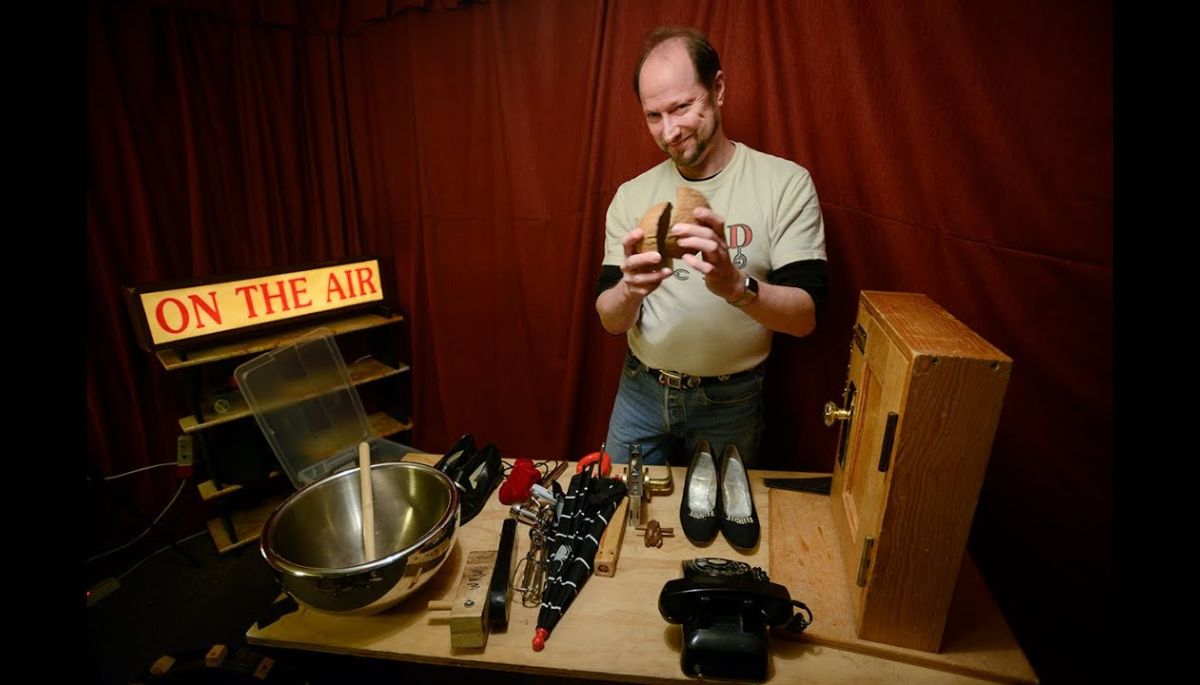Foley is the intricate and often overlooked art of crafting and adding lifelike sound effects to films, videos, and other media during post-production.
This meticulous process enhances audio quality and brings scenes to life through carefully synchronized sounds, creating a rich auditory landscape that complements a production’s visual elements.
Introduction To Foley
Foley is named after Jack Donovan Foley, who pioneered the technique at Universal Studios in 1914.
It involves reproducing everyday sounds and synchronizing them with on-screen actions to create a more immersive viewing experience.
Foley artists use an array of props and creative techniques to generate sounds that match the visual elements precisely, often creating sounds that are more vivid and clear than those captured during filming.
The process goes beyond simply replicating real-world sounds; Foley artists often need to create exaggerated or stylized sounds that, while not entirely realistic, better convey the emotional intent of a scene or action.
This requires not only technical skill but also a nuanced understanding of storytelling and audience perception.
History Of Foley
The art of Foley dates back to the transition from silent films to “talkies” in the 1920s.
As films began to incorporate sound, filmmakers quickly realized that on-set audio recordings were often insufficient or of poor quality.
Jack Foley and his team at Universal Studios began by adding basic sounds like footsteps and door movements to films, performed live as the film played.
This technique evolved from live radio broadcasts, where sound artists created effects in real time for radio dramas.
The transition to film required new approaches and technologies, as sounds needed to be precisely synchronized with on-screen actions.
Over the decades, Foley has become an integral part of the filmmaking process.
The techniques have been refined, and the range of sounds created by Foley artists has expanded dramatically.
Today, Foley is used not just in traditional films but also in television, video games, and even some forms of theater.
Types Of Foley Effects
Foley artists typically focus on three main categories, each requiring different skills and approaches:
Footsteps: This is often considered the foundation of Foley work. Artists use various shoes and surfaces to recreate the sound of characters walking, running, or dancing. They must match not only the type of surface (wood, carpet, gravel, etc.) but also the character’s weight, mood, and even personality through the sound of their steps.
Movement: This category includes all the subtle sounds created by body movements and clothing. From the rustle of a silk dress to the creak of a leather jacket, these sounds add depth and realism to character movements. Foley artists must be attuned to the materials and textures of clothing to recreate these sounds accurately.
Specific Props: This encompasses all other objects that characters interact with on screen. It can include anything from the clink of cutlery on a plate to the whoosh of a sword being drawn. Foley artists often need to get creative, using unexpected objects to create the perfect sound for a prop or action.
In addition to these main categories, Foley artists may also be called upon to create more specialized sounds, such as animal movements or fantastical elements in science fiction or fantasy films.
Examples Of Foley In Action
The creativity and ingenuity of Foley artists are best illustrated through specific examples:
- The lightsaber sound in “Star Wars” was created using a combination of movie projector motor hum and feedback generated by passing a stripped microphone cable by a television set.
- E.T.’s distinctive walk in “E.T. the Extra-Terrestrial” was made by squishing Jell-O in a wet T-shirt and adding the sound of a wet sponge.
- The velociraptor hatching sound in “Jurassic Park” was produced by crushing an ice cream cone wrapped in a wet chamois cloth.
- For “The Lord of the Rings” trilogy, the sound of the Nazgûl’s horses was created by using coconut shells (a classic Foley technique) combined with the squishing of a sink plunger in a bucket of water.
- In “The Matrix,” the sound of bullets moving in slow motion (the famous “bullet time” effect) was created by recording the sound of slinkies being manipulated.
How Foley Artists Work
Foley artists typically work in specially designed studios called Foley stages.
These stages are equipped with a variety of surfaces (wood, tile, gravel, etc.) and an extensive collection of props. The process usually involves the following steps:
Spotting: The Foley team watches the film and makes notes on all the sounds that need to be created.
Preparation: Props and surfaces are gathered based on the requirements of each scene.
Performance: The Foley artist performs the sounds in sync with the film, which is projected in the studio. This requires not only technical skill but also a sense of timing and rhythm.
Recording: A Foley recordist captures the sounds, ensuring high-quality audio.
Editing: The recorded sounds are edited and mixed with other audio elements of the film.
This process requires close collaboration between the Foley artist, recordist, and the film’s sound designer and director to ensure that the created sounds match the overall vision for the film’s soundscape.
How to Create Foley Effects at Home
While professional Foley requires specialized equipment and skills, you can experiment with basic Foley techniques at home using everyday items:
- Break celery stalks or lettuce heads to simulate breaking bones.
- Hit a phone book to create body punch sounds.
- Wave leather gloves to mimic flapping bird wings.
- Crush a leather pouch filled with cornstarch for crunching snow effects.
- Use coconut shells for horse hooves, as seen in “Monty Python and the Holy Grail.”
- Crinkle a plastic bag near a microphone to create the sound of a crackling fire.
- Use a wet sponge or watermelon to create “squishy” organic sounds.
The Impact of Technology on Foley
While the fundamental techniques of Foley remain similar to those used in the early days of cinema, technology has had a significant impact on the field.
Digital recording and editing tools allow for more precise synchronization and manipulation of sounds.
Sound libraries provide Foley artists with a base of pre-recorded sounds, which can be modified or combined with live performances.
Advanced microphones and recording techniques allow for the capture of more nuanced and detailed sounds.
However, the unique, custom-created sounds of Foley artists remain essential to a film’s sonic identity.
The human element in Foley—the ability to adapt and create sounds in real-time based on a scene’s specific needs—continues to be irreplaceable.
The Future of Foley
As filmmaking techniques evolve, so does the art of Foley. With the rise of virtual and augmented reality, Foley artists are exploring new ways to create immersive sound environments.
The increasing use of CGI in films also presents new challenges and opportunities, as Foley artists must create sounds for creatures and objects that don’t exist in the real world.
Despite these changes, Foley’s core principles remain the same: to enhance the viewer’s experience by creating a rich, believable sound world that complements and enhances the visual storytelling.




